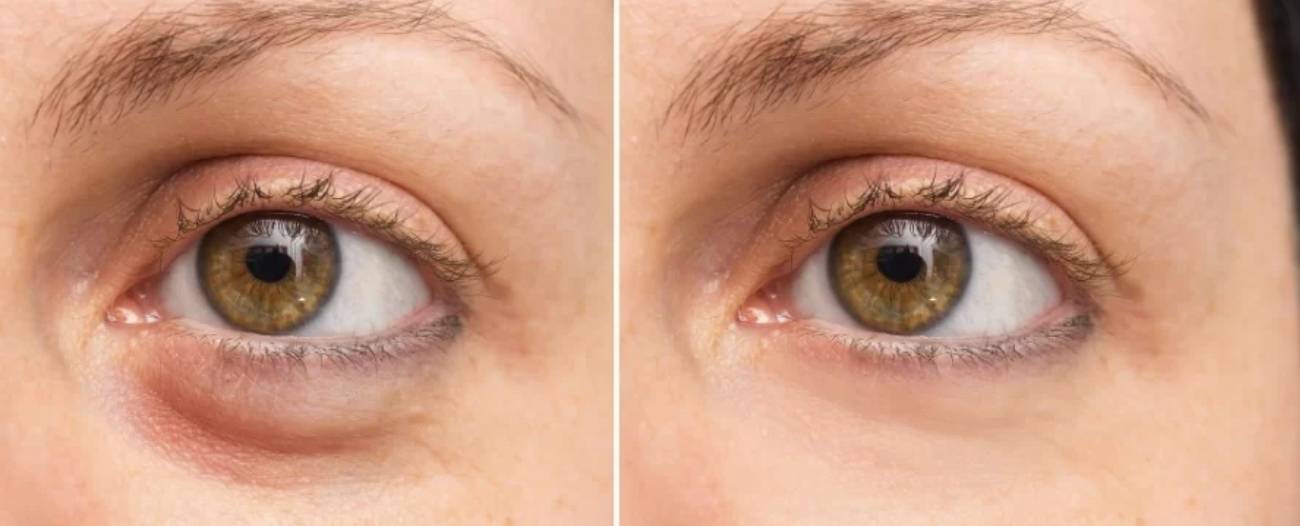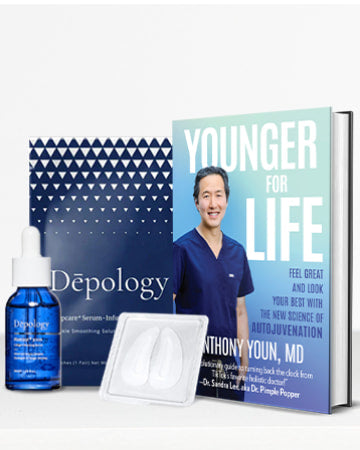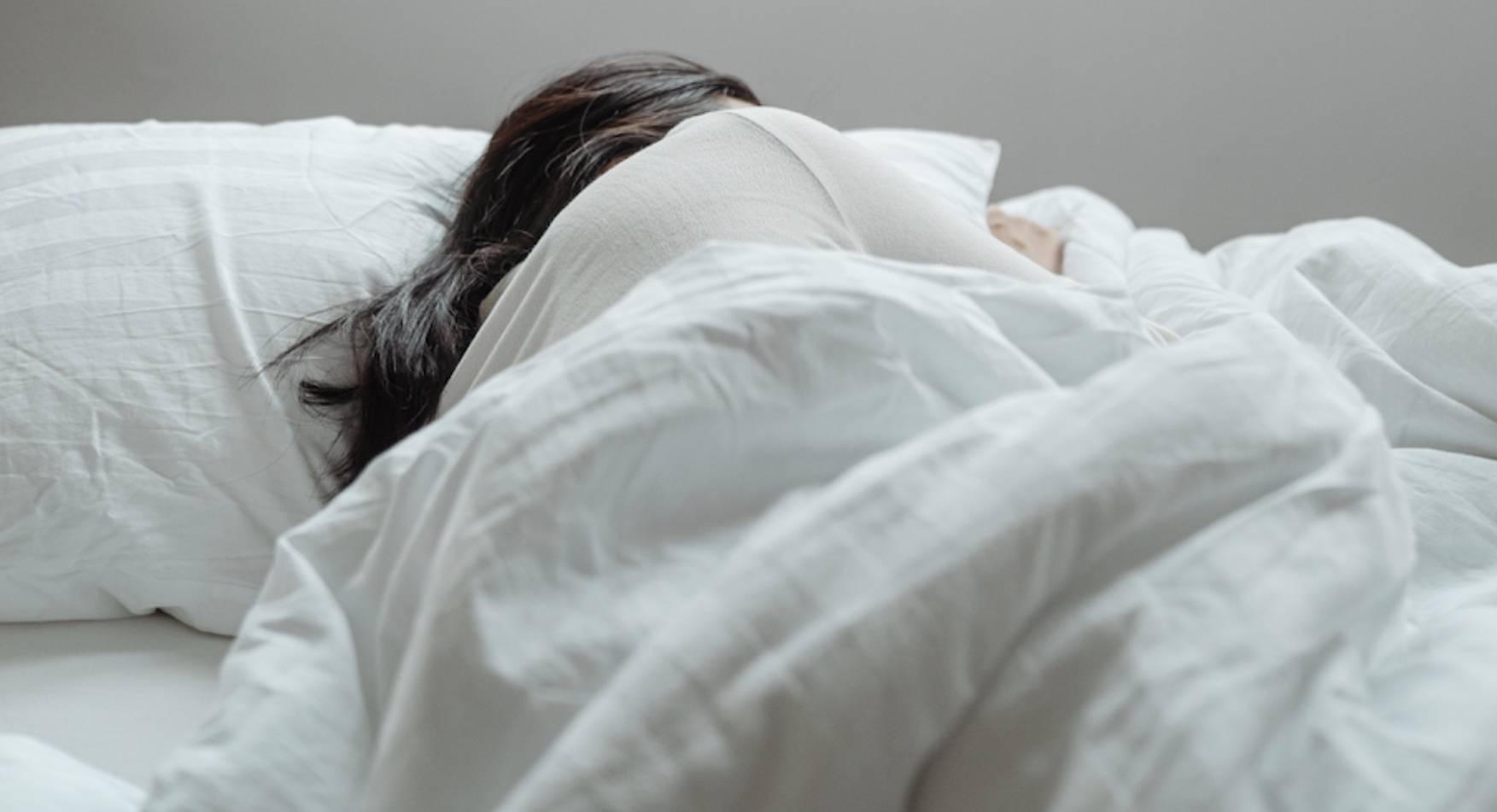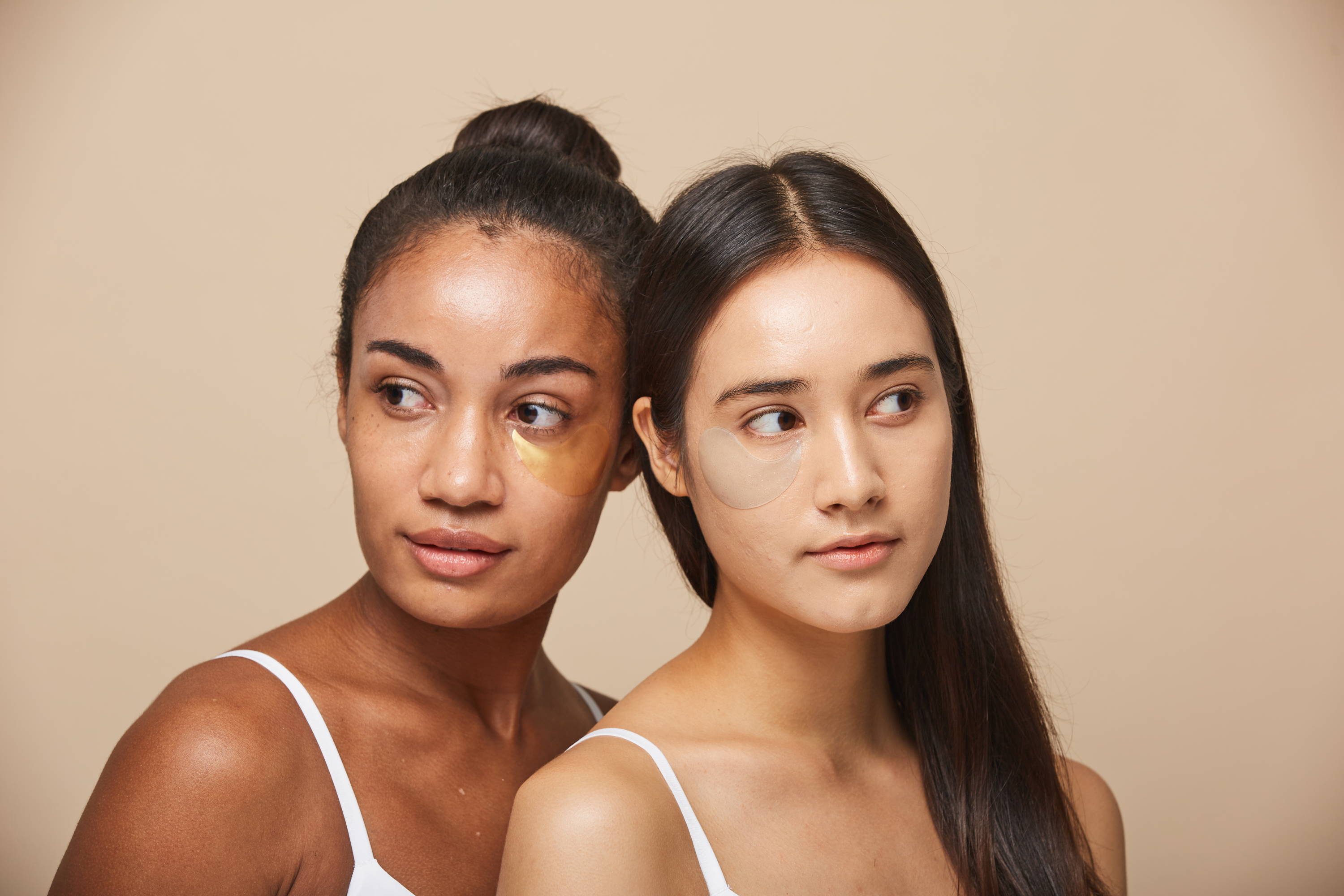
How To Get Rid Of Crepey Skin Under The Eyes? - Tips & Prevention
Though crepey skin texture is a concern for all areas of the body as we age, the area under the eyes tends to get disproportionately affected. This is due to the increased sensitivity around the eyes which often results in this area showing signs of aging first, as well as the eyelids. Though crepey skin doesn’t tend to show up until our 40s, some skincare users begin to notice symptoms as early as their 20s.
While a professional such as a dermatologist should be seen in severe cases, there are many approaches you can take in your daily routine to either prevent crepey skin from appearing or manage the appearance if you’ve already begun to notice aging signs.
What is crepey skin?
“Crepey skin” refers to skin that has become excessively thin, loose, and wrinkled, resembling the texture of crepe paper. It is characterized by fine lines, wrinkles, and a lack of elasticity, producing a fragile and sagging appearance.
Crepey skin is often associated with aging, as the skin naturally loses collagen and elastin over time, which are essential proteins that help maintain its firmness and suppleness. As these structural proteins diminish, the skin becomes thinner, less resilient, and more prone to wrinkles, fine lines, and the characteristic texture of crepey skin.
At what age does crepey skin start?
Crepey skin typically starts becoming more noticeable as a person ages, usually in their late 40s or early 50s. However, the exact age at which crepey skin begins to develop can vary widely based on factors such as genetics, sun exposure, and individual skincare habits. Some individuals may start experiencing crepey skin earlier, while others may not notice significant changes until later in life.
What causes crepey skin?
There are various factors can contribute to the development of crepey skin, including:
Aging
As mentioned earlier, the natural aging process leads to a decrease in collagen and elastin production, resulting in thinner and less elastic skin. Though the aging process is inevitable, there are steps you can take to reduce the symptoms and maintain healthy skin even into the later stages of life.
Environmental Factors
Exposure to harsh environmental conditions, such as extreme cold or dry air, can contribute to the breakdown of the skin's protective barrier and moisture balance. Other conditions such as air pollution can also weaken the skin’s ability to ward off free radicals.
Genetics
Genetics play a role in how quickly the skin ages and how prone it is to the crepey texture that comes with aging. Some individuals may be genetically predisposed to developing crepey skin earlier than others.
Hormonal Changes
Hormonal changes that occur with age, such as menopause, can impact the skin's structure and contribute to crepey skin.
Lack of Moisture
Proper hydration is essential for maintaining skin health and elasticity. Dehydrated skin can appear dry, flaky, and more prone to the symptoms of crepey skin.
Lifestyle Factors
Smoking, poor nutrition, and lack of exercise can all contribute to the breakdown of collagen and elastin fibers in the skin, accelerating the development of crepey skin.
Sun Exposure
Prolonged and unprotected exposure to the sun's ultraviolet (UV) rays can accelerate the breakdown of collagen and elastin fibers in the skin. This can contribute to premature aging and the development of crepey skin.
Weight Loss
Rapid weight loss or fluctuations in weight can lead to a loss of skin elasticity, resulting in sagging and crepey skin.
How do you get rid of crepey eyes naturally?
While a complete reversal of crepey skin around the eyes through natural methods may be challenging, there are several strategies you can try to improve the appearance of and tighten the skin around the eyes and elsewhere. Keep in mind that consistent efforts over time are usually required to see noticeable results.
Aloe Vera Gel
Aloe vera contains soothing and hydrating properties that can improve the texture of the skin. A small amount of pure aloe vera gel around the eyes is enough to see desired results.
Coconut Oil or Almond Oil
These oils can be applied in small amounts around the eyes to provide moisture and nourishment. Be sure to perform a patch test before using to ensure they don't irritate your skin.
Cucumber Slices & Cold Compresses
The cliches in film and television have some truth to them! Placing cool cucumber slices over your closed eyes for about 10-15 minutes can help reduce puffiness and provide a refreshing sensation. Additionally, applying a cold compress or chilled tea bags (such as chamomile or green tea) to your closed eyes for a short period may help reduce inflammation and improve the appearance of the skin.
Facial Exercises
Gentle facial exercises designed to target the muscles around the eyes can help improve circulation and muscle tone, potentially reducing the appearance of crepey skin.
Healthy Diet
A balanced diet rich in antioxidants, vitamins, and minerals can support skin health. Foods high in omega-3 fatty acids, such as fish and walnuts can help maintain the skin's moisture balance. Be sure to check out our guide for collagen-rich foods to support your skin’s health outside of your regimen.
Hydrate & Moisturize Regularly
Keeping the skin well-hydrated is essential to improve its texture and elasticity. Use a gentle, hydrating eye cream that contains ingredients like peptides and hyaluronic acid to lock in moisture and plump up the skin. Excessive alcohol consumption can also dehydrate the skin and contribute to premature aging, so it’s best to drink in moderation.
By using a high-quality, nourishing moisturizer daily, you can maintain your skin's hydration levels more effectively. Pay special attention to areas prone to crepey skin, such as the neck, chest, and under the eyes.
Massage
Gently massaging the area around the eyes with a hydrating oil or serum can stimulate blood flow and promote a healthier appearance.
Sun Protection
Though it may seem obvious, wearing sunglasses and applying sunscreen with broad-spectrum protection can do wonders for skin health. These precautions shield the delicate skin around the eyes from harmful UV rays that contribute to crepey skin.
Topical Treatments
You don’t have to travel to a doctor’s office for professional treatments! Between the affordability and accessibility of products such as microneedling patches, eye patches, and clinically-studied night masks, it has never been more convenient to treat aging symptoms from the comfort of your home.
Following an under-eye wrinkle analysis conducted by Anthony Youn, MD, he found that after the overnight application of Dēpology’s micro dart under-eye patches, his under-eye wrinkles were drastically reduced after less than 24 hours. He recommends following the guidelines of a twice-per-week usage for desired, fast results.
What are some of the best ways to prevent crepey skin?
While crepey skin is a natural part of the aging process, there are methods to help prevent and manage its appearance, both at home and with the help of skincare professionals:
Gentle Cleansing
Avoid harsh cleansers and abrasive scrubbing, which can strip the skin of its natural oils and contribute to dryness. Opt for gentle, sulfate-free cleansers that maintain the skin's moisture balance.
Get Adequate Sleep
Though life tends to get in the way, you should aim for seven to nine hours of quality sleep each night. Sleep is essential for cell repair and regeneration, which contributes to healthy skin.
Limit Makeup Application
Similar to alcohol consumption, it can sometimes be best for your skin to apply makeup in moderation, such as at special events as opposed to every day. Depending on the product and an individual’s skin type, makeup products can lead to excessively dry skin and damage. If you do choose to wear makeup regularly in your routine, be sure to always cleanse your face of the product before going to bed, maintaining a healthy cycle of skin hydration and moisturization.
Manage Stress
Chronic stress can negatively impact the skin's health. Practice stress management techniques such as meditation, yoga, deep breathing, or engaging in hobbies you enjoy.
Medical Procedures
Dermatological procedures like laser therapy, microneedling, chemical peels, and dermal fillers can also be used to address crepey skin and promote collagen production.
Quit Smoking
If you find it difficult to leave the habit behind, your skin’s health may be the motivation you need. Smoking accelerates the breakdown of collagen and elastin, leading to premature aging signs and crepey skin. Quitting smoking not only benefits your skin but also your overall health.
Regular Exercise
Physical activity has been proven to enhance blood circulation, which can help deliver nutrients and oxygen to the skin cells. Incorporate regular exercise into your routine at least a few days per week to promote healthy skin.
Regular Skincare Routine
By establishing a consistent skincare routine that includes cleansing, gentle exfoliation, and products with ingredients like Matrixyl®, retinol, vitamin C, and peptides, you will ultimately increase the amount of collagen produced in the skin cells, thus preventing crepey skin and premature aging.
Conclusion
While these recommended approaches may help improve the appearance of crepey skin, complete reversal may not be achievable. Preventing crepey skin is a long-term commitment that requires a combination of healthy habits, patch tests, and protective measures. If you have specific concerns, be sure to set up an appointment with a dermatologist for personalized advice and recommendations.













